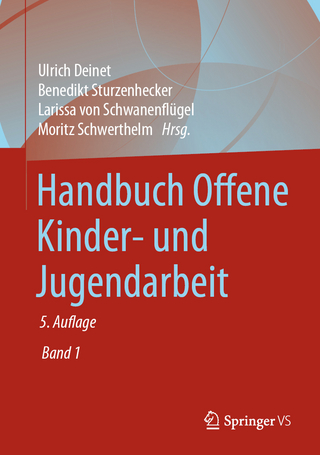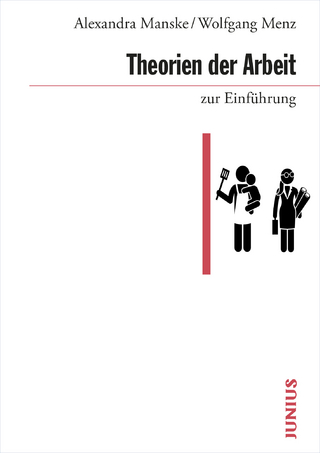
Where Shrimp Eat Better than People
Brill (Verlag)
978-90-04-52264-0 (ISBN)
East, South and Southeast Asia are home to two-thirds of the world’s hungry people, but they produce more than three-quarters of the world’s fish and nearly half of other foods. Through integration into the world food system, these Asian fisheries export their most nutritious foods and import less healthy substitutes. Worldwide, their exports sell cheap because women, the hungriest Asians, provide unpaid subsidies to production processes. In the 21st century, Asian peasants produce more than 60 percent of the regional food supply, but their survival is threatened by hunger, public depreasantization policies, climate change, land grabbing, urbanization and debt bondage.
Wilma A. Dunaway, Ph.D. (1994), University of Tennessee. Professor Emerita, School of Public & International Affairs, Virginia Tech. In addition to six monographs, she is editor of Gendered Commodity Chains: Seeing the Hidden Women’s Work and Laborer Households in Global Production. Maria Cecilia Macabuac, Ph.D. (2005), Virginia Tech. Professor and Director for University Extension, Mindanao State University, Iligan Institute of Technology. Author of numerous articles about Philippine fisheries, mining communities, women’s work and depeasantization. Has extensive experience in ethnographic field research.
Acknowledgments
List of Tables and Figures
List of Abbreviations
Introduction
1Scholarly Significance and Investigative Goals
2Methods of Inquiry and Areas of Study
3 What Do We Promise Readers Conceptually?
4 Organization of the Book
1 The Asian Fishery Crisis, Nutritional Unequal Exchange and Food Insecurity
1Trends in Asian Fishery Production and Nutritional Shortfalls
2Investigative Questions
3 Conflict between Food Security and Food/Fishery Exporting
4 Dependence on Imports as Threat to Food Security
5Nonfoods and Asian Food Security
6Will Aquaculture Solve Asian Protein and Iron Shortfalls?
7Food Security and Pressures toward Depeasantization
8Ecological Degradation of Asian Fisheries and Food Insecurity
9Intra-national Inequalities in Food Access
10Impacts of Wastage on Food Security
11Looking to Future Chapters
2 Debt, Resource Exploitation and Integration into the World Agro-Food System
1The Role of External Development Agencies
2Philippine Elites and Economic Restructuring
3Government Promotion of Agricultural Exports
4 Government Promotion of Capture Fishing for Export
5 Government Promotion of Acquaculture for Export
6 Ecological Impacts of the Philippine Agro-Industrial Export Strategy
7 Looking to the Future
3 Globalized Food and Asian Hunger The Philippine Case
1Privileging Exports over Local Consumption
2 Import Dependence and Risks to Food Security
3 Transformation of Foods into Nonfoods
4Class Polarization and Inequalities in Food Access
5 Looking to the Future
4 Commodity-Chained Peasants Construction of the Philippine Food Extractive Enclave 166
1Transformation of Panguil Bay Agriculture
2 Transformation of Capture Fishing
3 Transformation and Expansion of Aquaculture
4Integrating the Panguil Bay Fishery into National and Global Commodity Chains
5 Is Philippine Fish Marketing Culturally Unique?
6 Ecological Impacts of Global Integration
7 Food Insecurity in Panguil Bay Communities
8 Looking to the Future
5 The World Does Not Weep for Us Semiproletarianized Households, Nonwaged Labor and Depeasantization
1Hidden Household Subsidies to Export Commodity Chains
2 Conceptualizing Capitalist Externalization of Costs to Households
3 Externalization of Costs to Peasant Fishing Communities
4Pressures to Depeasantize Panguil Bay
5 Debt Bondage as Externalized Cost
6 Threats to Peasant Livelihoods
7 Alteration and Intensification of Women’s Work
8 “The Shrimp Live Better Than We Do”: Threats to Human Survival
9 Looking to the Future
6 Endlessly Toiling The Gendered Inequalities of Fisher Household Survival
1Conceptualizing the Semiproletarian Portfolio of Diverse Labors
2 Inequitable Management of Scarce Labor Time
3 Arrangement of Household Credit
4Restructuring Household Boundaries
5 Inequitable Pooling and Allocation of Household Resources
6 Conflict over Household Budget Management
7 Looking to the Future
7 Climate Change, Land Grabbing and the Future of Asian Food Security
1Climate Change, Peasant Persistence and Asian Food Security
2 Land Grabbing and Asian Food Security
3 Conclusion
8 Propping Up the World Food System The Future of Hungry Asian Farmers and Fishers
1Looking toward the Future of Asian Food Insecurity
2 Peasant Contributions to Asian Food Security
3 Will There Be an Historical Transition to Large Asian Farms?
4 Deruralization, Occupational Multiplicity and Asian Peasant Persistence
5 Asian Debt Bondage and the World Food System
6 Will Asian Peasants Persist in the 21st Century?
7 Conclusion: Seeing Hunger through the Fisherwoman’s Lens
Bibliograhie
Index
| Erscheinungsdatum | 29.12.2022 |
|---|---|
| Reihe/Serie | Studies in Political Economy of Global Labor and Work ; 2 |
| Verlagsort | Leiden |
| Sprache | englisch |
| Maße | 155 x 235 mm |
| Gewicht | 897 g |
| Themenwelt | Sozialwissenschaften ► Soziologie ► Mikrosoziologie |
| ISBN-10 | 90-04-52264-6 / 9004522646 |
| ISBN-13 | 978-90-04-52264-0 / 9789004522640 |
| Zustand | Neuware |
| Haben Sie eine Frage zum Produkt? |
aus dem Bereich


